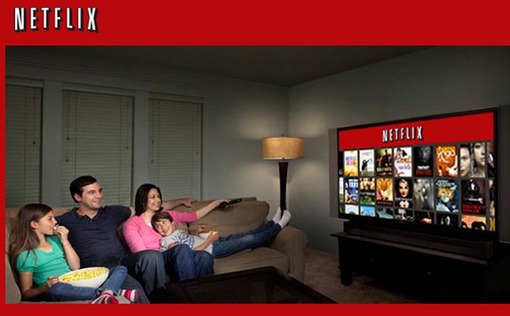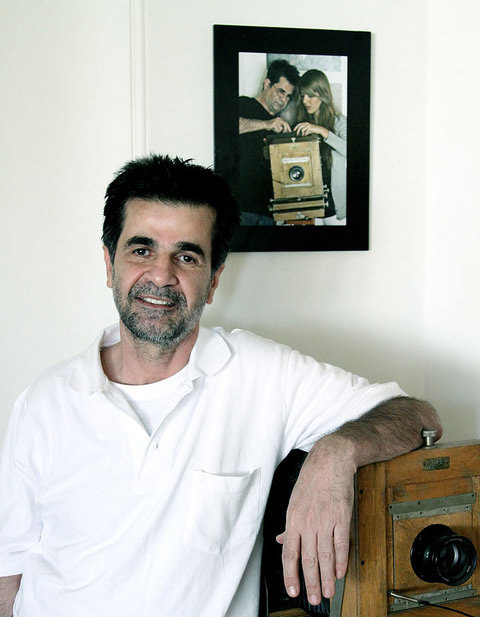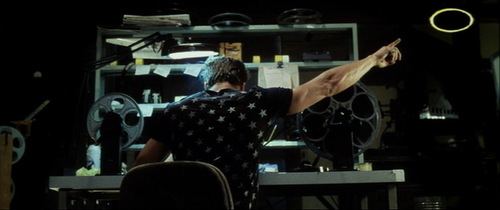It’s fiction.
The indignation over the BBC British speculative fiction film “Death of a President” has died down substantially since the film received its North American premiere at the Toronto International Film Festival in September. Some of those who were initially alarmed and offended and downright disgusted at the idea of a film about the assassination of an American president seem to have figured out that presidential assassination is not a novel idea, even in the movies. (I do not recall a storm of outrage after season two of “24,” which ended with an attempt on the life of President David Palmer; nor after the beginning of season five last January, which began — SPOILER ALERT — with a depiction of his assassination far more explicit than anything in “Death of a President.”)
The most shocking thing about the movie is portrayal of the essential truth: that George W. Bush, like his father before him during Iran-Contra, is out of the loop of history. He’s a dupe, the “wimp factor” personified, and he serves only as a placeholder for the people who decided to put him in power, when he was still a pathetic nobody in Texas (the pathetic nobody he reveals himself to be every time he opens his mouth). Dubya is but a balloon with a cartoonish face painted on it. Sooner or later, the illusion will pop. By 2006, that news shouldn’t be shocking to many people — but as a perspective on history, it’s still a little ahead of the curve.
For the literalists among us, however, it’s all in a name. As long as the character’s name is fictional (even if the office he holds is not), then the dramatization of the repercussions of a hypothetical assassination (in the case of “DoaP,” set in the future: October, 2007) is OK. Just as it’s apparently OK to use Robert F. Kennedy’s death as an opportunity to turn the Ambassador Hotel into something like “Neil Simon’s California Suite with Assassination” (in “Bobby”) because, well, that murder actually happened. Right? Then there’s Philip Roth’s 2004 alternate history novel, “The Plot Against America,” in which Charles Lindberg defeats FDR in the 1940 presidential election and turns the United States into an anti-Semitic isolationist dystopia. That one has been read as an allegory for the current Bush administration, too, but Roth used other real names instead of George W. Bush’s. Meanwhile, “South Park” and “Team America: World Police” graphically kill off real public figures by name, but use cartoons or puppets (with realistic gore). And disaster and horror movies depict the destruction of entire real-life cities and landmarks, with thousands or even millions killed, without any serious intent, but just for entertainment.
I don’t know what the fuss is about, except that it’s provided people on the right and the left with an opportunity to profess disingenuous pseudo-patriotic horror (they are shocked, shocked!) that such a thing would be deemed a suitable subject for a motion picture, and it’s a good thing the U.S. Constitution protects freedom of speech because this is in bad taste and going too far, blather, blather, blather… (These are the same people who think Borat lives in the real Kazakhstan.)
Either you understand the difference between fact and fiction — whether the names are real or not — or you don’t. Here’s what I wrote after the Toronto press screening of “Death of a President”:
“Death of a President,” the documentary-style speculative fiction about the assassination of the 43rd President of the United States, is seamless, intelligent and maybe even necessary to an understanding of George W. Bush’s role in the world today, and his place in the wider scope of history. Especially when public awareness of the facts about his administration lags so far behind what has already been documented.
Written and directed by Gabriel Range, this very convincingly staged television “documentary” falls into a tradition of fictionalized British films (going back to Peter Watkins’ famous “The War Game” and “Punishment Park” in the early 1960s) that use nonfiction techniques to explore contemporary social and political issues. Range himself made a film in 2003 called “The Day Britain Stopped,” about what might happen if public transportation came to a standstill. Before that, he made “The Menendez Murders” (2002), described as another form of docu-drama.
December 14, 2012






